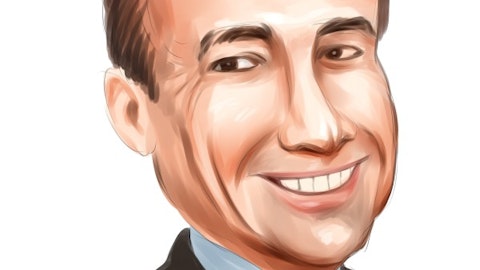And we’re actively negotiating with other payers, and look forward to updating you on additional progress in due course. This year, it’s really important to focus on increased paid commercial prescriptions for Sotyktu. We will continue to build volume from both new patients that are going to move directly onto Sotyktu at the specialty pharmacies, which, quite frankly, become easier with the improved access that we have now, as well as moving patients out of bridge and onto commercial products. David talked about where we are today, but in Q1, we expect to see around 10,000 paid prescriptions for Sotyktu. And he also mentioned, there will be an increase in gross net due to broader rebating, which was needed to secure improved access, that impacts net sales in Q1.
But we expect to see good momentum in growing our base of paid prescriptions this year. And we plan to get roughly double that level around 20,000 prescriptions in Q4. And that volume momentum will more than offset the gross-to-net reset in Q1 as the year progresses. As you also asked around conversion, conversion is going exactly as we expected. We’ve made very good progress in shifting patients from CVS from the bridge to commercial products. We talked about taking around two months to three months for patients to move from bridge to commercial, and as a result, you saw that 40% sequential growth that excluded the clinical trial purchases. And so we’ll continue to drive demand and work to continue to improve moving patients from our bridge with our ESI and Cigna wins in 2024, and also work to secure improved access in 2025 as well, where it makes financial sense to do so.
Tim Power: Thanks, Adam. Andrea, let’s go to the next question, please.
Operator: The next question comes from Seamus Fernandez of Guggenheim Securities. Please go ahead.
Seamus Fernandez: Thanks very much. So just a quick one here. On Reblozyl, the continued strength of the brand and the acceleration that we’re starting to see. Can you just talk about what’s driving that incrementally? And maybe give us a little bit of a sense of how we should be thinking about the international opportunity for Reblozyl, in particular? Thanks.
Chris Boerner: Adam?
Adam Lenkowsky: Yeah, Seamus. Thanks for the question. The first-line MDS launch is progressing very well in the U.S. with strong demand, supported by our broad label in an RS-agnostic patient population. Just take you back, we launched in late August, and initially after the launch, we saw rapid switches from ESAs to Reblozyl. But we’re now seeing strength in first-line use across the RS-positive population and we’re steadily building momentum in the RS-negative patient population, particularly in the community setting, where the majority of patients are treated. We also have, after the ASH presentation, we’ve heard feedback from both academic and community physicians recognizing the durability of response and the ability to remain transfusion independence as key features of the brand.
So we’re very pleased with the launch as you know, we’re seeing strong sales performance. We expect that to continue this year. And Reblozyl was also approved in Japan in mid-January. We’re seeing, nice uptake there and we expect European approval in the first half of this year.
Tim Power: Great. Let’s go to our next question, please, Andrea.
Operator: The next question comes from Tim Anderson of Wolfe Research. Please go-ahead.
Tim Anderson: Thank you. On Sotyktu, I think it was at Q3, you had mentioned it would take longer to get no-step edits. So I’m wondering what the current step edits are exactly. What brands do patients have to step through? Is it Otezla primarily, or is it Humira either brand or biosimilar or what exactly?
Adam Lenkowsky: Yeah, Tim. Thank you. So as I mentioned, we’ve secured additional access at ESI and now Cigna in a one-step position. And so that really is regardless of the product. So that could be a step after Otezla or it could be a step after IL-17s or the IL-23 agents in the market. But what’s important is that that adds another 40 million lives to complement our zero-step edits in CVS. So taken together, that’s 65 million lives today. And we’re continuing to actively negotiate with payers. And we will update you on additional progress, over the coming months.
Tim Power: And our next question, please, Andrea.
Operator: The next question comes from Trung Huynh of UBS. Please go ahead.
Trung Huynh: Hi, guys. Thanks for taking my question. Just on IRA, I realized there’s not much you can say about the negotiation where I think CMS has just sent their initial offer. But I was wondering about more, how do you think about the impact? So, for Eliquis, given the patient mix is largely skewed towards Medicare, do you think there could be a potential uplift that could help offset that pricing erosion and how do you anticipate the commercial spillover from those pricing impacts?
Chris Boerner: Yeah. Thanks for the question. I’ll take that. So, as it relates to IRA, we do expect an improvement in patient affordability as the patient out-of-pocket changes for patients this year and into next. We’ll see this more acutely next year as out of pocket max is capped at $2,000 and then the patients have 0% liability thereafter. More broadly, though, we largely don’t expect Medicare Part D design changes to impact our portfolio because that’ll largely take effect in 2026 when branded Revlimid will be fully eroded. As it relates to commercial spillover, I think it’s important — we always look at multiple planning scenarios, including the risk of spillover, but also the potential opportunity, as I just shared, around patient affordability.
So there are pushes and pulls there with changes in the benefit design. We are going to have to continue to manage potential spillover risk to commercial with the transparency of the MFP price on September 1. But we also do that today as we manage both books of business. And we’ll need to continue to remain disciplined across our commercial payers. And at the same time, just because a payer wants to include this in negotiating mix in commercial, it certainly doesn’t mean that we have to agree there. So we expect continued strong performance this year for Eliquis in the U.S. and expect significant growth through the end of 2025.
Tim Power: Thanks, Adam. Let’s go to the next question, please.
Operator: The next question comes from Geoff Meacham of Bank of America. Please go ahead.
Geoff Meacham: Hey, guys. Good morning, and thanks for the question. Chris or David, on capital allocation, you guys have some deals closing, obviously, in the first half of this year. But would you say the balance of the year is more of a pause on deals with the focus on integration, or would bolt-on still be of interest? I’m just trying to get a sense with all the launches operationally, whether newer products or more products and integration could be a distraction to what you’re doing commercially. Thanks.





